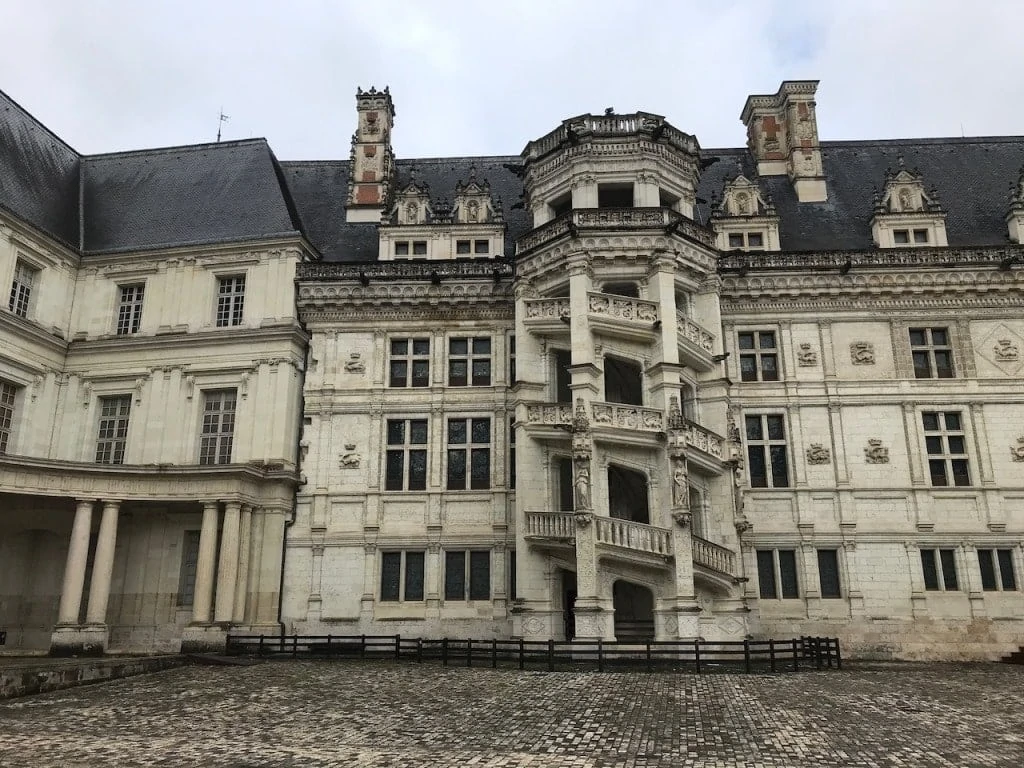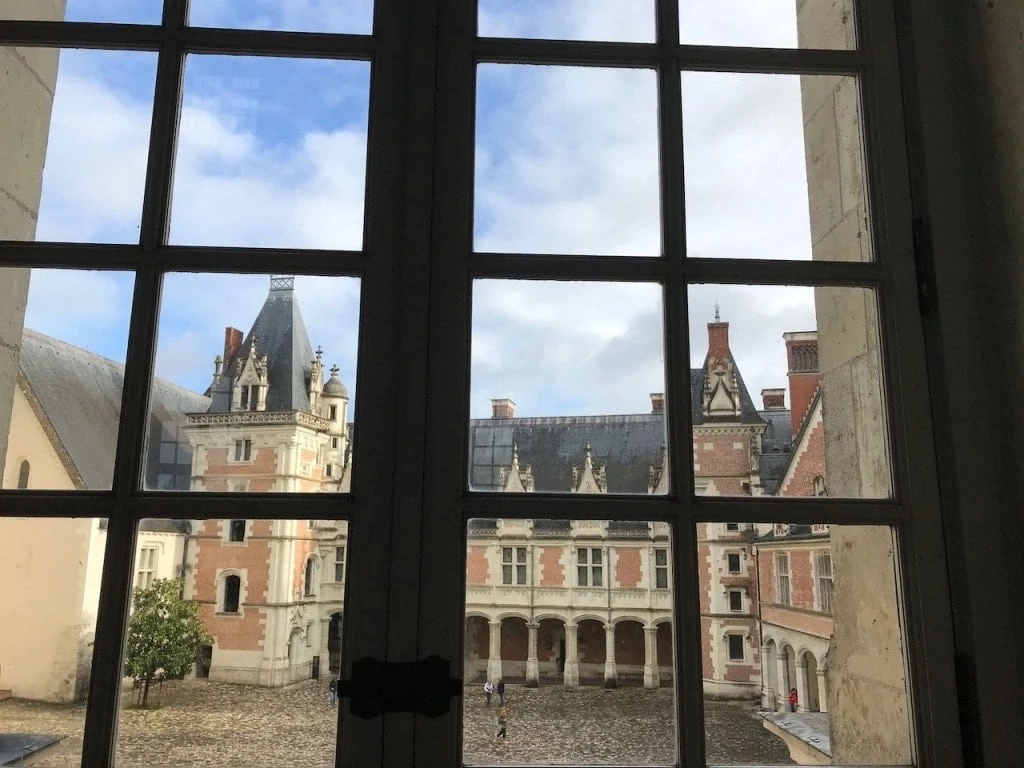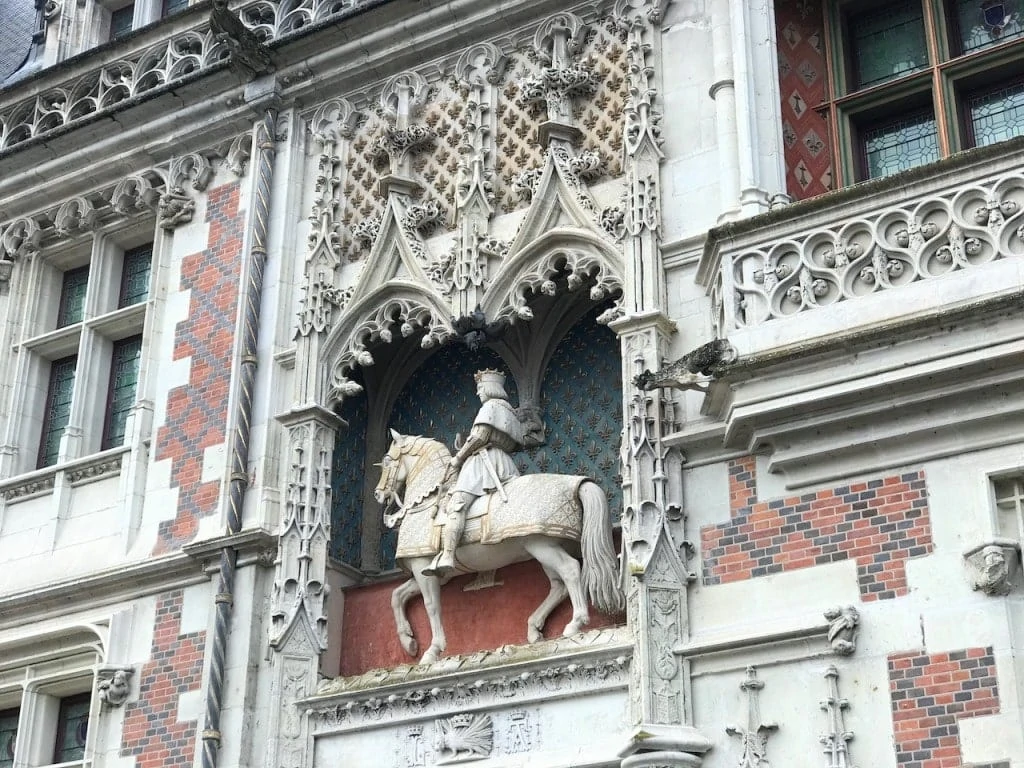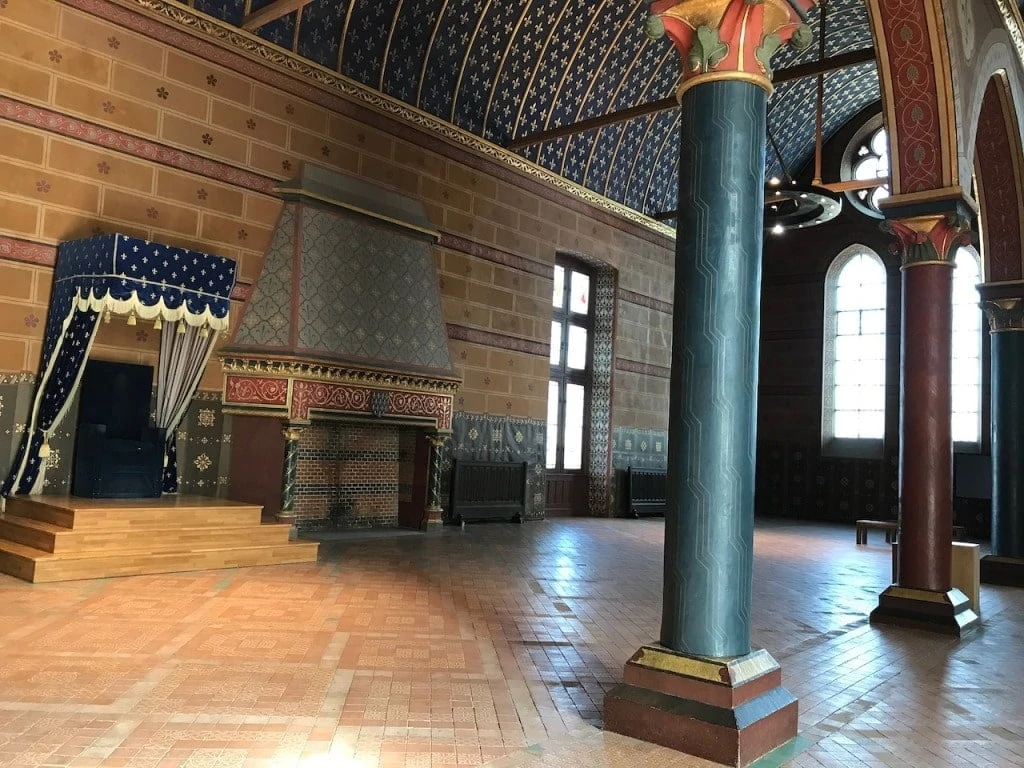A guest post by Leyla Giray Alyanak
Most visitors to France have the castles of the Loire high on their list: who hasn’t wanted to visit Chambord, Chenonceau, or that little gem, Azay-le-Rideau?
Sadly, as they whip through the top chateaux, visitors may miss one of the most spectacular: the Royal Chateau of Blois, an incredible collection of architectural styles where much French history has been made.
Situated in the center of the city of Blois, it is easy to reach by train from Paris in under two hours. Once in town, you can walk downhill to the chateau in under ten minutes.

A Guide to the Royal Chateau of Blois
Blois Castle: A Thousand-Year History
Blois is known as a royal residence: it has been home to seven kings and ten queens of France, which of course has led to innumerable anecdotes and intrigues, not to mention illustrious guests.
Think of it.
When Joan of Arc was on her way to Orleans to fight the English, she gathered her troops here, at Blois.
Machiavelli, the philosopher-statesman, stayed here, twice, as he swivelled his diplomacy between Florence and France.
Henry III’s mother, Catherine de Medici, had her own quirks while she lived here. She built an astrological observatory within the castle, and rarely went anywhere without her personal astrologer.
One of the best-known guests, historically speaking, was the popular Duke of Guise, head of the ultra-catholic League and a threat to the reign Henry III, whom he hoped to replace, during the Wars of Religion. Henry, quite aware of the threat, had him murdered right inside the castle walls, within the king’s own apartments.
In a true case of ‘what goes around comes around’, Henry would himself be assassinated a few months later by a Catholic extremist monk in retaliation for his murder of de Guise.
And the stories go on, sealed within the castle walls, waiting only to be released.
Click here to buy your tickets to the Blois Castle.

Four Eras Within Four Walls
Blois is such an intriguing castle. Not only do its walls hold age-old secrets, but the walls themselves are the story.
Blois isn’t a single castle – it is more like a four-in-one, four different periods, four wings, four styles.
The first wing dates back to the 9th century, a medieval fortress which was expanded over time. All we have left from this are buildings from the 13th century, including a giant room built in 1214 and used for royal entertainments and to try crimes.
It would later be used By Henry III for meetings of the Estates-General (who represented the various sectors of the population: nobility, clergy, and ‘the rest’). It has a stunning Gothic room, one of the largest of its kind in France.
The next wing was added by Louis XII, at the very end of the 15th century, turning this medieval fortress into an urban castle, with archways and pillars and a courtyard, reflecting what was still very French architecture at the time.

An interesting item from this reign is a statue of the king riding a horse, set into the outside wall. Legend has it that the sculptor committed suicide when he realized the horse had two legs in the air at the same time, a difficult position.
Louis XII felt a deep affection for this castle and for the next century, it would become the favourite residence of the kings of France. Today this wing is home to the Museum of Fine Arts.
The third wing was built by François I who, fresh from his armed forays into Italy, introduced Renaissance architecture into Blois. He built the chateau’s famous external circular stairway, inspired by the Vatican.
The stairway is open to the courtyard and allowed the king to look down upon his courtiers – and them to catch his attention as he worked his way up. Also during his reign, Blois was doted with a throne room and a huge sculped Renaissance bed.
The final wing was built by a royal aspirant, Gaston of Orleans. We are now nearing the mid-17th century and Gaston, Louis XIII’s brother, is set to inherit the throne from his childless sibling.
He undertook a massive building project in a classical style and even started destroying some of his predecessor’s work but Louis XIII unexpectedly had a son – the future Louis XIV, the Sun King − and Gaston, no longer in line for the throne, lost access to his unlimited funds, so construction ceased.
And so you have it, four wings, one castle.

Blois Chateau and its waning history
Despite this illustrious past, the castle at Blois almost disappeared.
Louis XIV came by only once and Blois was slowly abandoned, inhabited by old courtiers and bureaucrats and by the occasional impoverished noble.
By the 18th century, the castle was falling apart and Louis XVI ordered its destruction in 1788. It was only saved by being transformed into a military barracks.
It would eventually become a historical monument when the first list was published in 1840. Its fortunes then turned and, being an official monument, money was made available for its conservation and restoration.
In 1845, Blois became the first historic building to undergo this type of revival, so successful it became a blueprint for later renovations.

Visiting the Royal Chateau of Blois
The chateau of Blois is a trove of royal treasures. Its 35,000 works of art aren’t all on display but you’ll see many of them in the royal apartments of the François I wing and in the Fine Arts Museum.
On summer evenings, you can watch it shed its daytime bonhomie with a majestic light show of colour and sound, its narration leading us into the mysteries behind its walls and into the everyday lives of its inhabitants.
The chateau is open daily from 9 am or 10 am, depending on the season (a full schedule can be found at https://en.chateaudeblois.fr/2056-sound-and-light.htm.
Click here to buy your tickets to the Blois Castle.
Leyla Giray Alyanak has been blogging since 2007 at womenontheroad.com, one of the web’s most popular solo travel blogs for women over 50.
